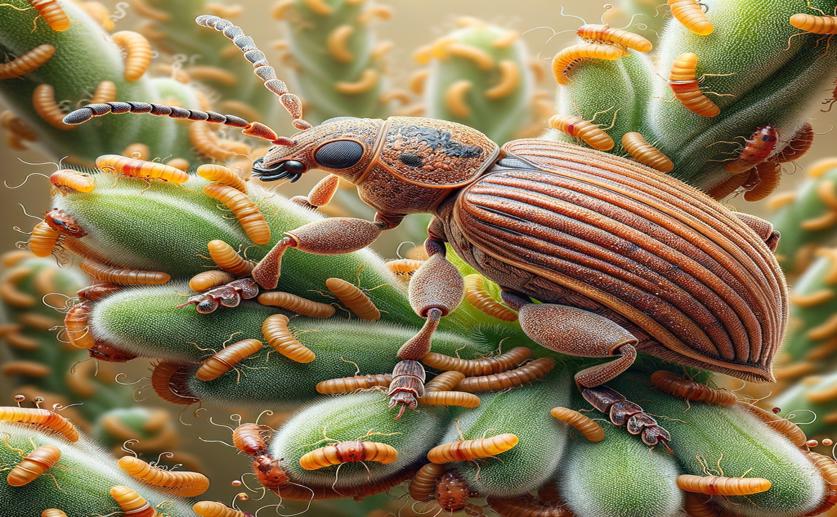
Local Factors Affect Alfalfa Weevil and Parasites More Than Landscape Complexity
Jenn Hoskins
4th August, 2024

Image Source: Natural Science News, 2024
Key Findings
- The study was conducted in the Ebro Basin, Spain, focusing on alfalfa weevil and its natural enemies
- Alfalfa weevil larvae were more abundant in fields with longer perimeters and sprinkler irrigation
- The abundance of natural enemy Bathyplectes spp. was linked to the presence of alfalfa weevil larvae and aphids, which provide food
AgricultureEnvironmentAnimal Science
References
Main Study
1) Local factors have a greater influence on the abundance of alfalfa weevil and its larval parasitoids than landscape complexity in heterogeneous landscapes
Published 3rd August, 2024
https://doi.org/10.1007/s10980-024-01949-2
Related Studies
2) A meta-analysis of crop pest and natural enemy response to landscape complexity.
3) Dispersal in Host⁻Parasitoid Interactions: Crop Colonization by Pests and Specialist Enemies.
4) A degree-day model of sheep grazing influence on alfalfa weevil and crop characteristics.
Journal: Journal of economic entomology, Issue: Vol 105, Issue 1, Feb 2012



 18th July, 2024 | Jim Crocker
18th July, 2024 | Jim Crocker